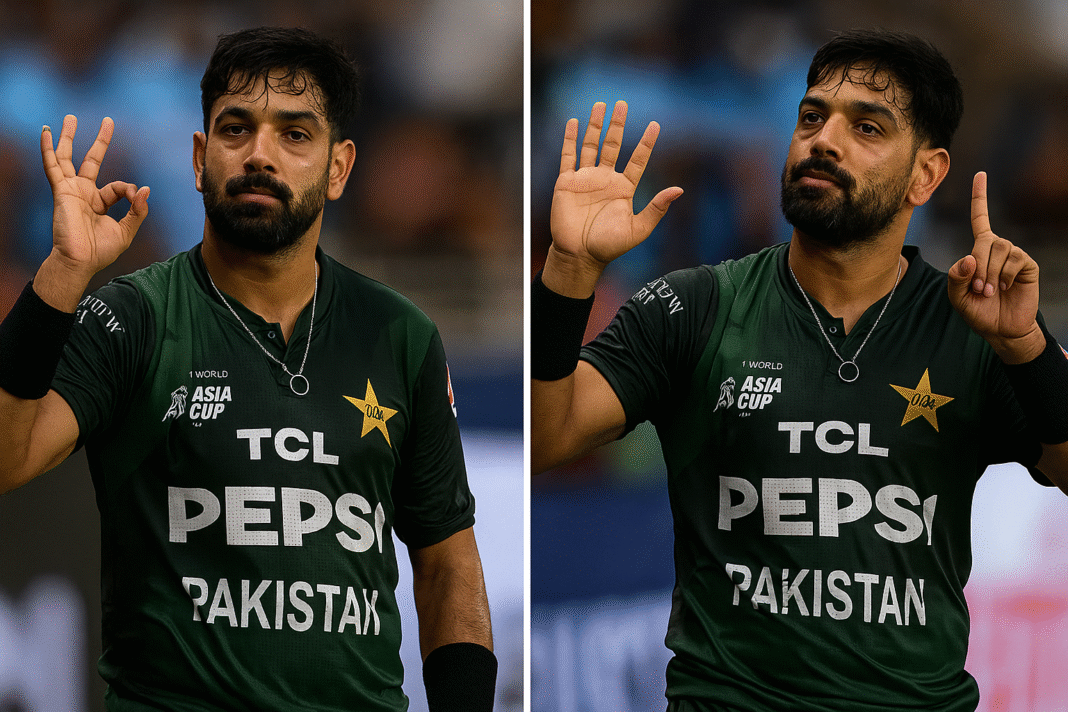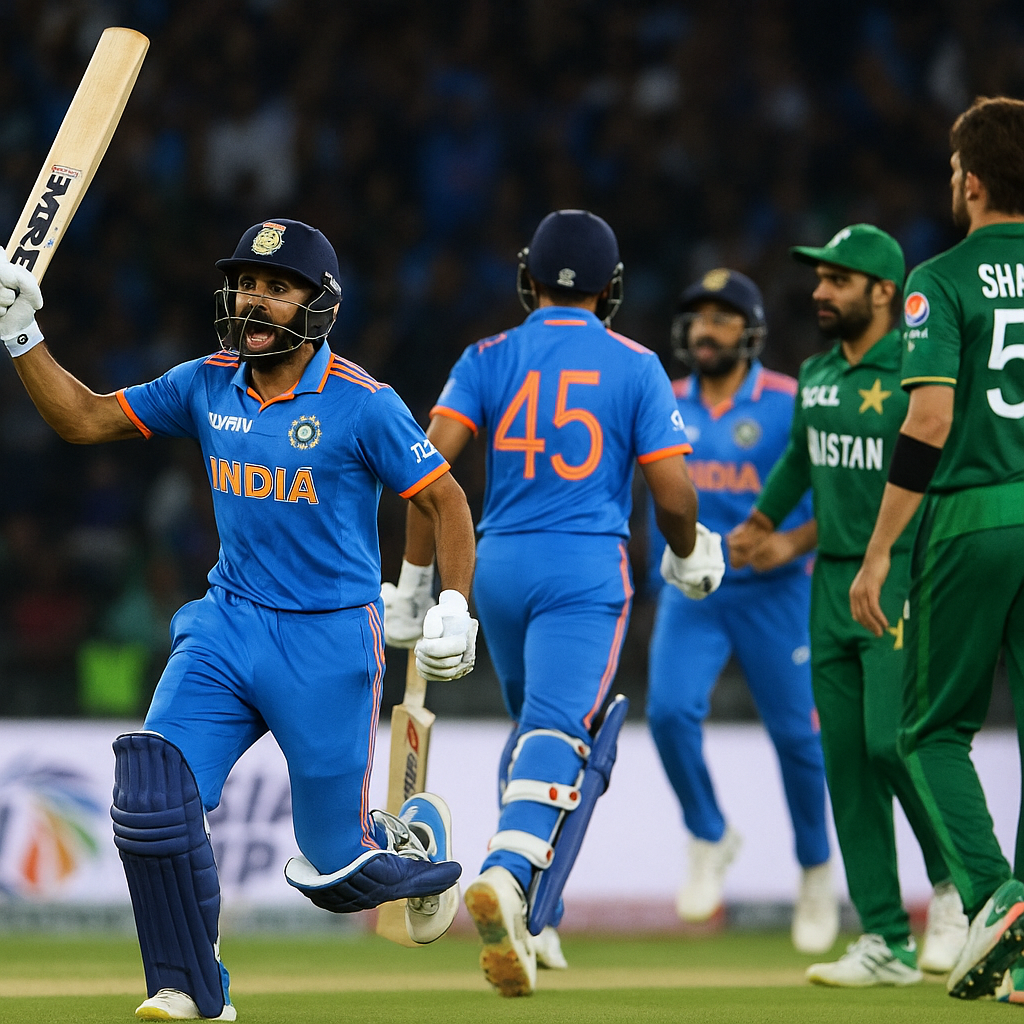Haris Rauf’s “6-0” Gesture Lights Up Indo-Pakistan Battle: Bold, Cheeky, or Crossing the Line?
The India-Pakistan rivalry never rests, and during the Asia Cup Super Four clash, Pakistan fast bowler Haris Rauf added a fiery new chapter. While fielding on the boundary, he responded to jeers from Indian spectators not with silence—but with a daring hand signal: “6-0,” followed by a mock plane-takeoff and crash. The gesture instantly set social media ablaze, sparking cheers, outrage, and endless debate.
What Happened: The Spark That Ignited
- During India’s batting innings, Haris Rauf was stationed at the boundary ropes when sections of the crowd taunted him.
- Rauf turned to the stands, raised his fingers to indicate “6-0”, then mimed an airplane lift and crash.
- The symbolism was unmistakable, referencing Pakistan Air Force’s much-touted victory earlier this year when six Indian fighter jets were claimed to have been downed in a cross-border aerial encounter.
Reactions: From Cheers to Controversy
In Pakistan
Many fans hailed Rauf’s gesture as bold, cheeky, and a perfect response to trolling. For them, it wasn’t just a taunt—it was pride, a reminder of national strength, and a display of fearlessness on the field. Politicians and commentators even tied the signal to the broader narrative of Pakistan’s military achievements, giving it symbolic weight beyond cricket.
In India & Beyond
Indian fans, on the other hand, condemned it as unsportsmanlike and provocative. For many, the gesture crossed the line between banter and disrespect. Neutral observers were divided—some argued that heated rivalries thrive on such moments, while others felt players should maintain composure regardless of crowd provocation.
The Wider Context: Gesture, Rivalry & Sportsmanship
India vs. Pakistan matches are more than cricket—they’re charged with history, pride, and politics. Haris’s gesture wasn’t just spontaneous fun; it carried layers of symbolism. By invoking a military incident in the middle of a cricket match, he blurred the lines between sport and geopolitics, stoking emotions far beyond the stadium.
To add fuel to the fire, the match ended without the customary handshake between the two teams. The absence of this symbolic gesture of sportsmanship didn’t go unnoticed, reinforcing the narrative of tension.
Analysis: Bold, Risky, or Detrimental?
| Aspect | Pros | Cons |
|---|---|---|
| Psychological Impact | Sends a message of defiance, gives fans something to cheer, boosts team morale. | Risks escalating tensions, invites criticism, can be labeled unprofessional. |
| Fan Engagement | Creates buzz, dominates headlines, strengthens national support. | Overshadows cricketing performance, diverts focus from the actual match. |
| Sportsmanship | Some view rivalry theatrics as part of the spectacle. | Others see it as disrespectful and damaging to the spirit of cricket. |
Aftermath & What It Means Going Forward
The incident will linger long after the final ball. Clips of the gesture are already viral, fueling memes, debates, and nationalistic narratives. Haris Rauf has cemented his image as a fiery, outspoken character—not afraid to stand up to rivals.
But such theatrics come with risks. If repeated, they could draw disciplinary attention from cricket authorities. More importantly, gestures like these can’t mask underlying issues: Pakistan’s bowling inconsistencies, middle-order fragility, and fielding lapses. Symbolism can rally fans, but only performance wins matches.
Final Thoughts
Haris Rauf’s “6-0” gesture wasn’t just a reply to trolls—it was a statement. To some, it was pride and swagger; to others, unnecessary provocation. But one thing is certain: it highlighted how deeply layered the India-Pakistan rivalry is.
Every ball, every boundary, and even every hand gesture becomes part of the narrative. For Rauf, this moment adds to his legacy as an emotional, fearless cricketer. Yet it also raises a question: in an age where every gesture is magnified, should players feed the fire—or let their performance do the talking?



